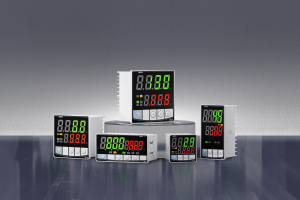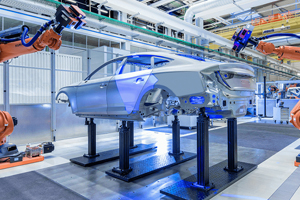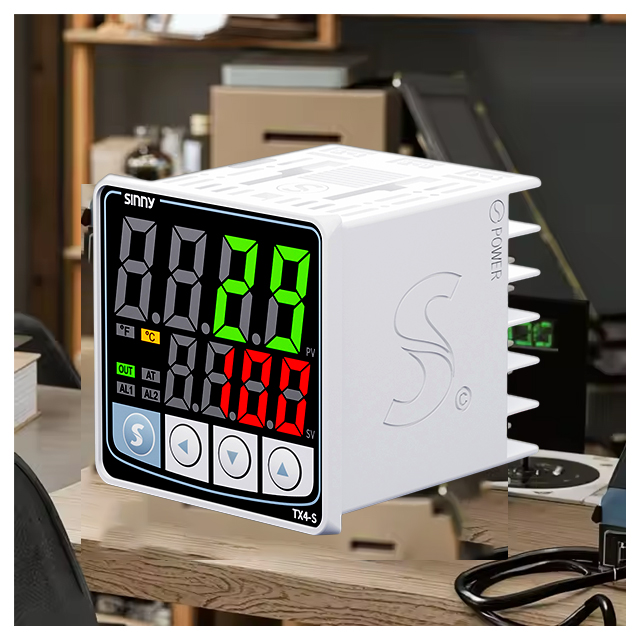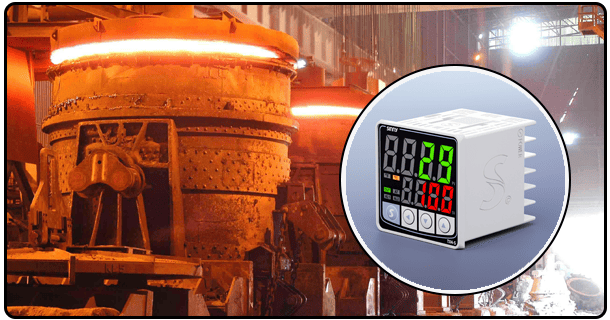Programmable PID Temperature Contr oller
Precision temperature control is essential in a wide range of industries. From manufacturing to laboratory research, HVAC systems and even food processing. This precision is often achieved by sophisticated feedback mechanisms called controllers. Among the most effective are Proportional-Integral-Derivative (PID) controllers, but not all are created equal. A PID temperature control that is programmable offers an important advantage. It allows you to customize its behavior to suit your application through tuning and configuration. In this article, we will explore what makes a PID temperature controller programmable. We'll also discuss how you can configure the device effectively and why flexibility is important for accurate and reliable temperature regulation. Engineers and technicians can achieve maximum performance by understanding these units.
What is the programmable PID temperature controller?
(Section : Definition and core benefits)
A PID temperature control , also known as a programmable temperature controller , is an electronic device that automatically maintains a process parameter (usually temperature) within a setpoint by altering its output signal according to the error between the measured Process Variable (Process variable PV) and setpoint. A PID controller is different from simple on/off controls that turn the system on/off. It uses three components to control its algorithm.
Proportional: Responds to the currently error. The output of the controller changes in proportion to the magnitude error. Higher Proportional Gains (Kp), however, result in stronger corrections. However, too many can lead to instability.
Integral: reacts to the cumulative error. The purpose of this function is to remove any residual error in the steady state (the "offset") by integrating error signals. Integral Time (Ti), a parameter, determines the speed at which this error accumulates and influences output. Smaller Ti values mean faster correction of persistent errors.
Derived (D): reacts to the rate of change the error. This parameter predicts the future and dampens oscillations to improve stability. Derivative Time parameter (Td), controls the amount of 'future action' that is expected based on error rate.
Configuration capabilities is the key difference between programmable controllers and their user Interface (UI). Users typically can:
Set your target temperature.
You can adjust the parameters P, I and D.
Choose the control mode (P, PID, or PI) you want to use.
Limit SP: Set the upper or lower limit for the variable process.
Set alarm outputs and settings.
Adjust display units (e.g., Celsius/Fahrenheit).
Some units are capable of customizing setpoints or changing the schedule.
The controller can adapt the control strategy to match the dynamic of the process that it manages. This leads to better accuracy, stability and responsiveness than fixed parameter controllers.
The Key Features and Components of a PID Programmable Controller
(Section Anatomy Devices)
Both hardware and software are required to operate a programmable temperature controller.
Microcontroller/Processor: The 'brain' that executes the PID algorithm, processes sensor readings, and handles user inputs.
Interface Display: A LCD screen or LED display that displays the Setpoint, Process Variable and other parameters. Navigation and input are done with buttons or rotary knobs.
The input terminals are: Connectors:
Sensor input: Receives temperature signals such as thermocouples, Resistance Temperature Detectors, Pt100, or thermistors. Some of the inputs can be used with any sensor type, while others are specific for certain types. You can connect voltage inputs (0-5V or 0-10V) and current inputs (4-20mA).
Input Power: This input connects to a power source (e.g. 12V, 24V, or AC mains depending on model).
The output terminals are: Included in the list are:
Output Control: This is usually a solid state relay (SSR), or mechanical relay output. The output signal, which is often switched by a relay, controls the actuator at the end (heater or cooler).
Analog Output: Less common models have a voltage signal or alternating current that represents the percentage output.
Output Alarm: Separate relay contacts used to alert high/low temperatures.
Memory Internal: Stores programmed parameters and user presets as well as calibration data.
Configuration parameters: The following are some of the options that users can adjust:
Setpoint (SP),
Proportional Band or Gain
Time Integral (Ti).
Derivative Time (Td)
Lower/Upper Setpoint Limits
Lower/Upper Alarm Limits
The output mode (e.g. heating control, cooling control)
User Presets
How to program and configure a programmable PID controller
To access Configuration Mode, you need to press specific buttons repeatedly (e.g. pressing 'Menu" multiple times and then 'Enter") or hold a key during the startup. It is common for the display to change and show "Config" or other text.
Basic Configuration
Setpoint: Enter desired temperature.
The PID Parameters can be tuned:
Automatic Tuning The user can manually change the P, I and D values.
The Proportional Band is This band can be configured more easily than the Gain (Kp). A lower PB indicates a stronger proportional response. The common starting point for PB is 100/(required sensitivity).
Integral time (Ti). Enter your time in minutes or seconds. Ti values greater than 1 indicate a slower action integral. The typical values can range between seconds and hundreds of minutes depending on how fast the process is.
Calculate the derivative time (Td). Enter your time in seconds. This dampens oscillations. Begin with a small value (e.g. 0), and then increase it if necessary.
Referenc: Resources like Control Engineering Articles on manual tuning can be useful.
Auto-Tuning: Most modern controllers have an Auto-Tune or Autotune function. The process usually involves:
Start the Auto-Tune Mode.
The controller makes a slight change in the process, often by increasing output briefly.
Reference: The manufacturer's documentation will usually provide detailed instructions on how to use the auto-tune function.
Set Limits and Alarms
Set the maximum or minimum temperature that a process variable cannot exceed. The controller can then shut down the actuator, e.g. turn off the heater or activate the alarm output.
Set the output alarm action.
Input configuration:
Define your output range, for example 0-100%.
Use 'Bumpless tuning' features, if they are available. These allow you to change the parameters or setpoint without changing the output signal abruptly (preventing instability or overshoot).
Advanced User Presets: Store different PID parameters sets for different recipes and operating modes to allow quick switching.
(H2 Heading)
Common applications of PID temperature controllers
Industrial Heating: Ovens (ceramic, paint baking, food processing), kilns, furnaces, heat treatment equipment.
Lab Equipment Water baths, incubators, PCR machines and dryers.
HVAC Systems Advanced climate control systems, thermostats requiring precision setpoints.
Food & Beverage: Fermenters, chillers and proofing cabinets.
Processes of Chemical Production: Temperature control in reactors, distillation columns and batch processes.
(Conclusion)
Programmable PID temperature controllers represent a significant advancement over simpler control devices. The ability of these controllers to be tuned and configured offers unmatched flexibility for stable temperature control in a variety of applications. Understanding the PID components, the configuration process and the best practices will allow users to harness its power and improve efficiency, quality and reliability of processes. To unlock the potential of these instruments, you must be diligent in your selection process and select carefully. Refer to your specific device's user manual for more information.























